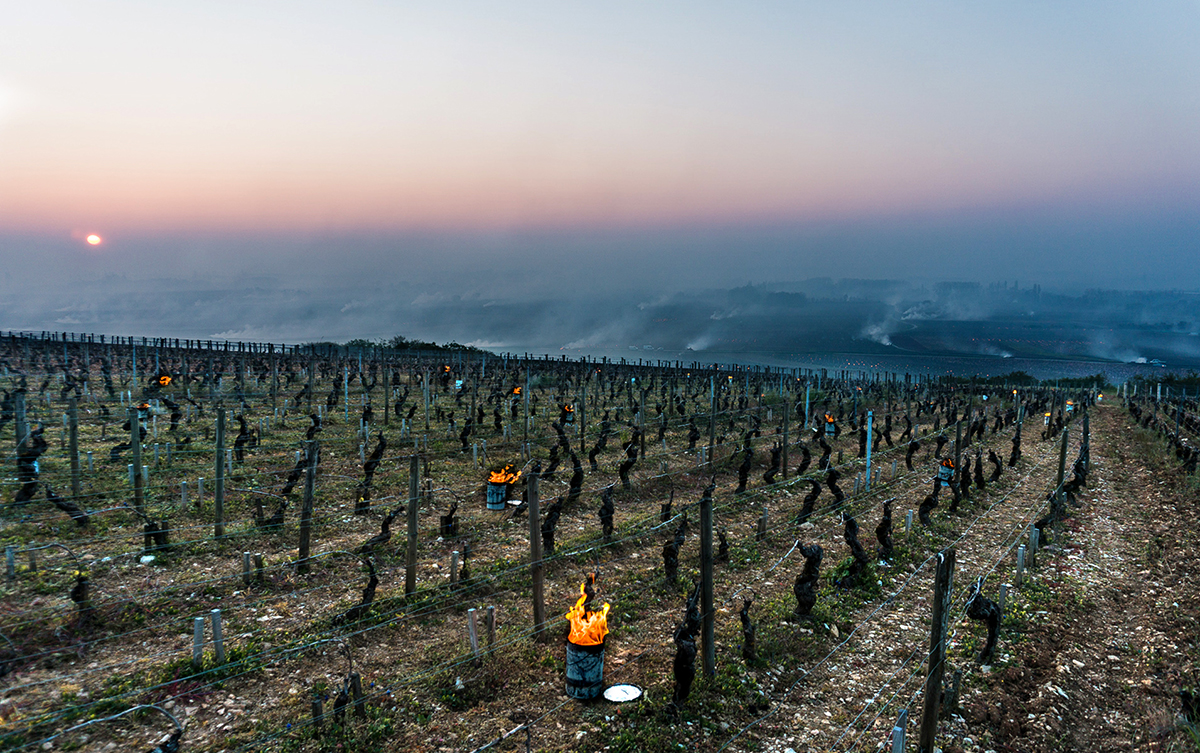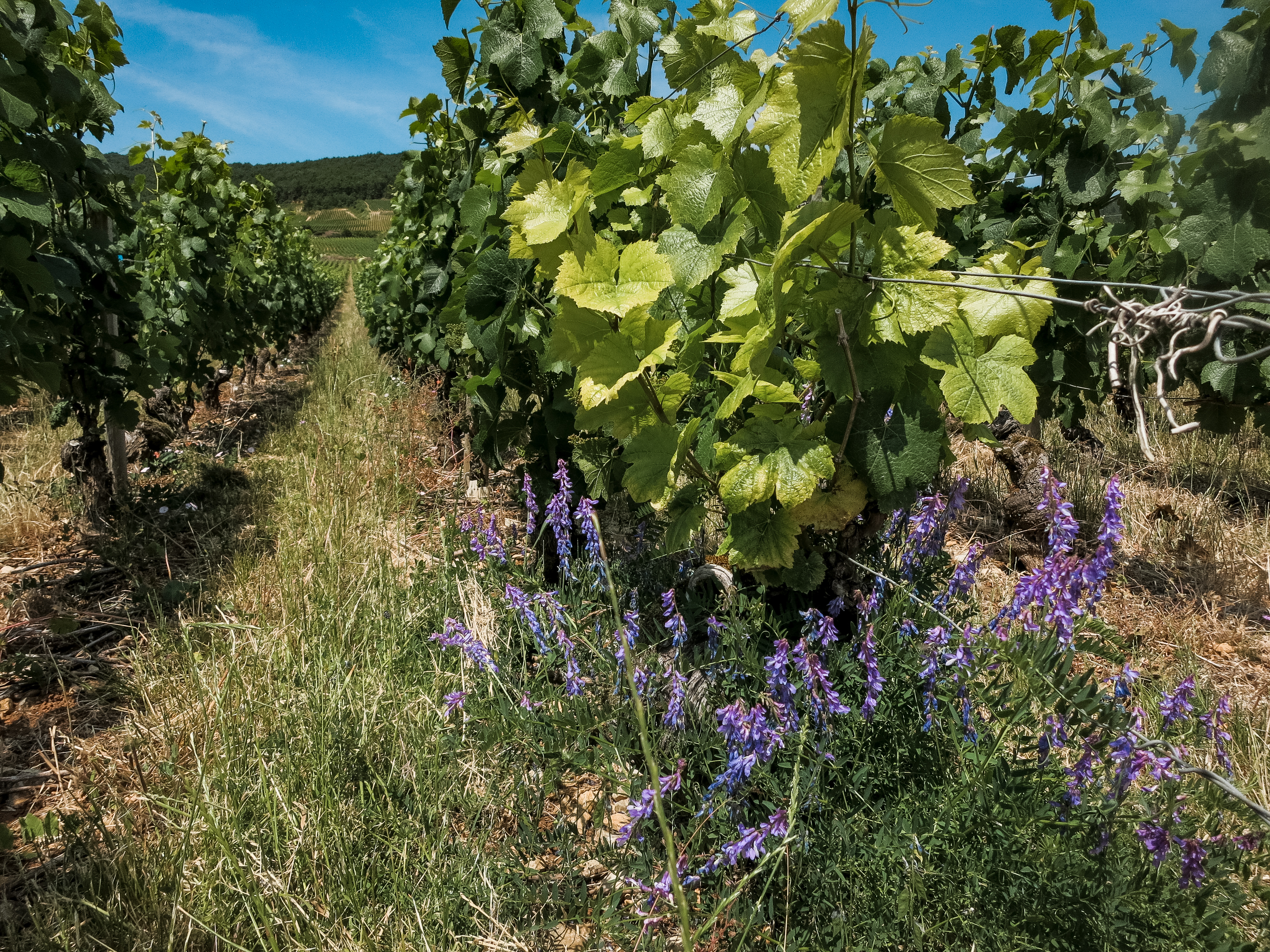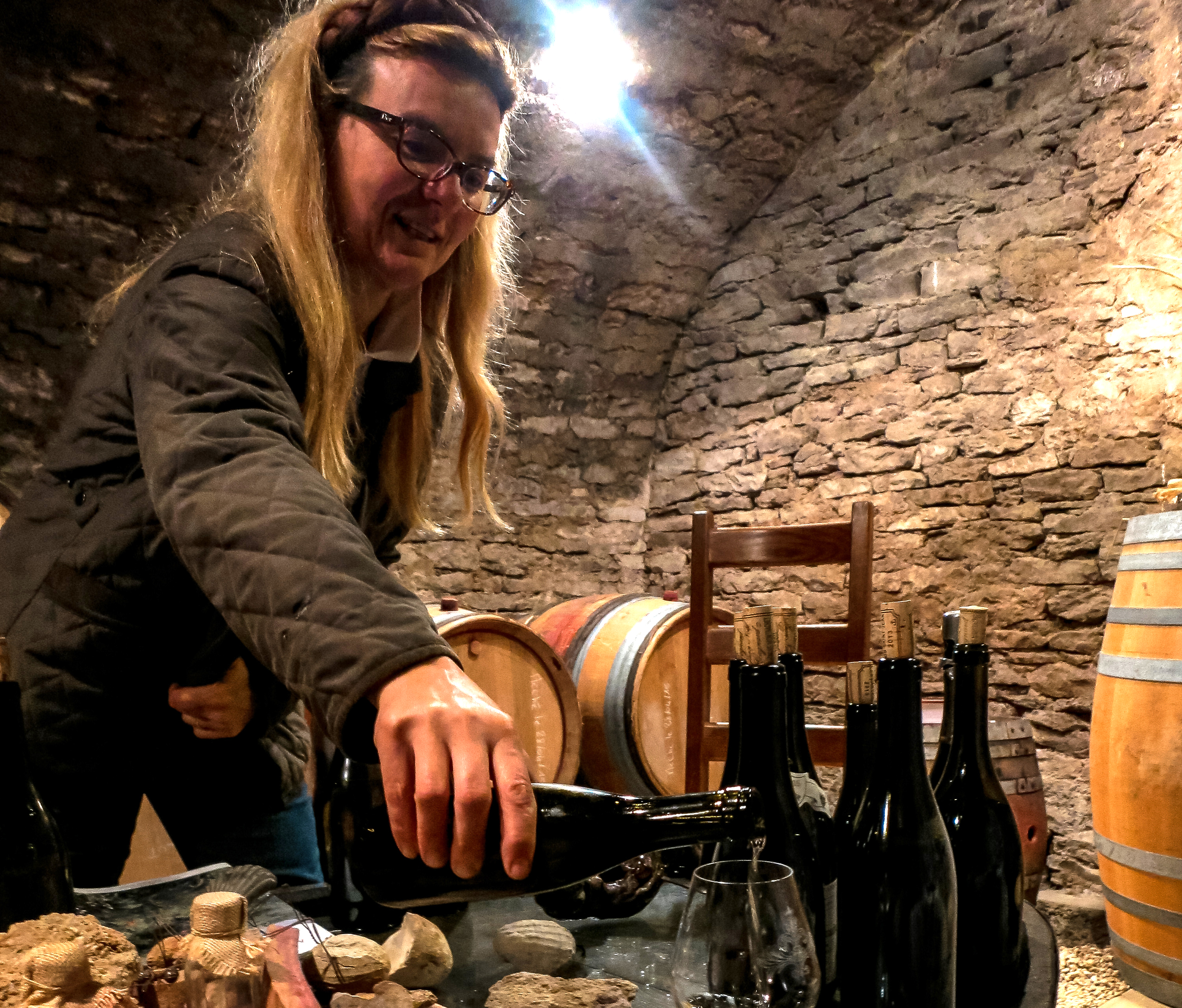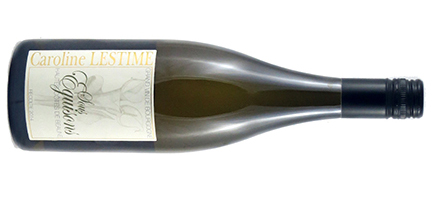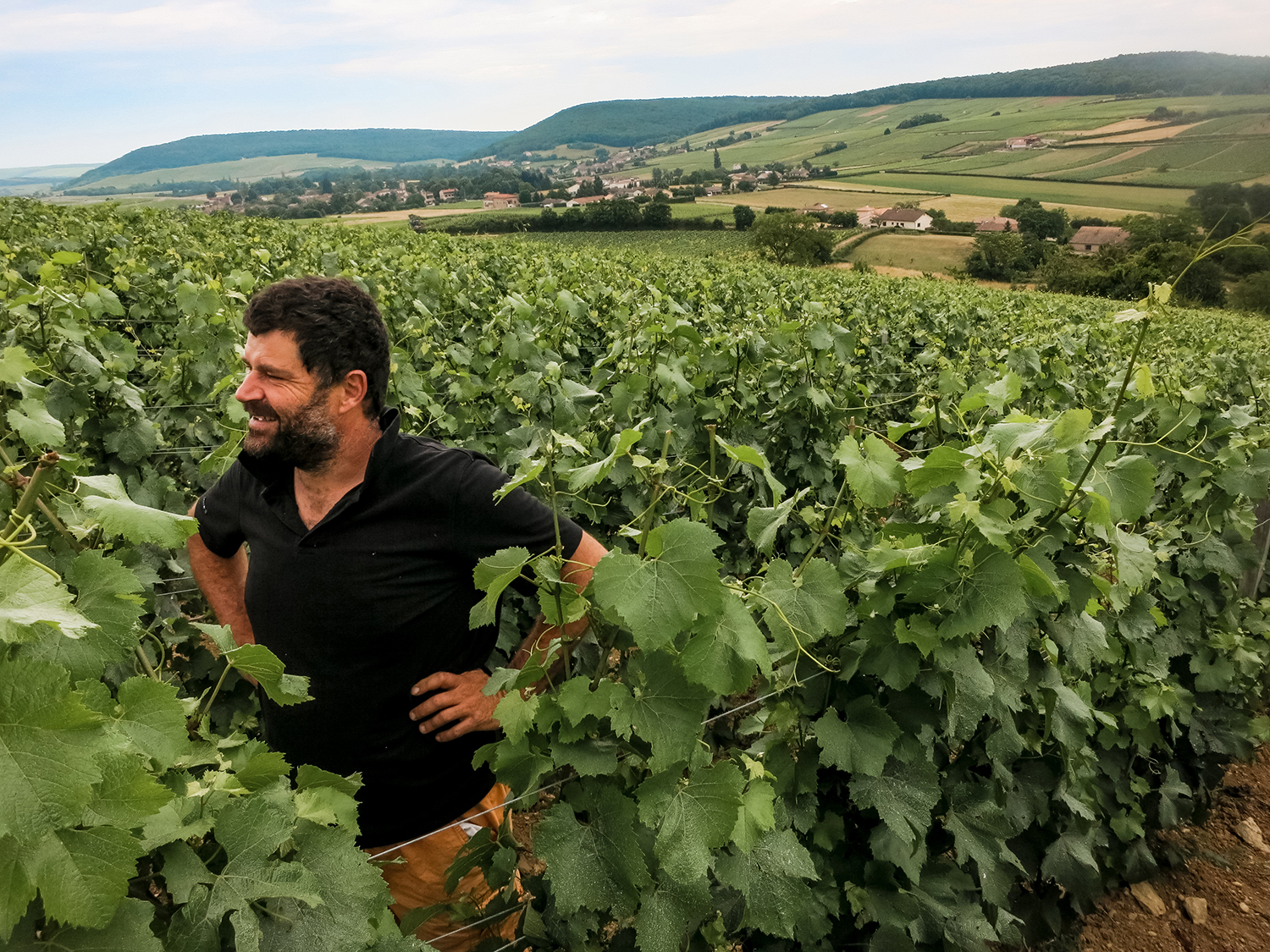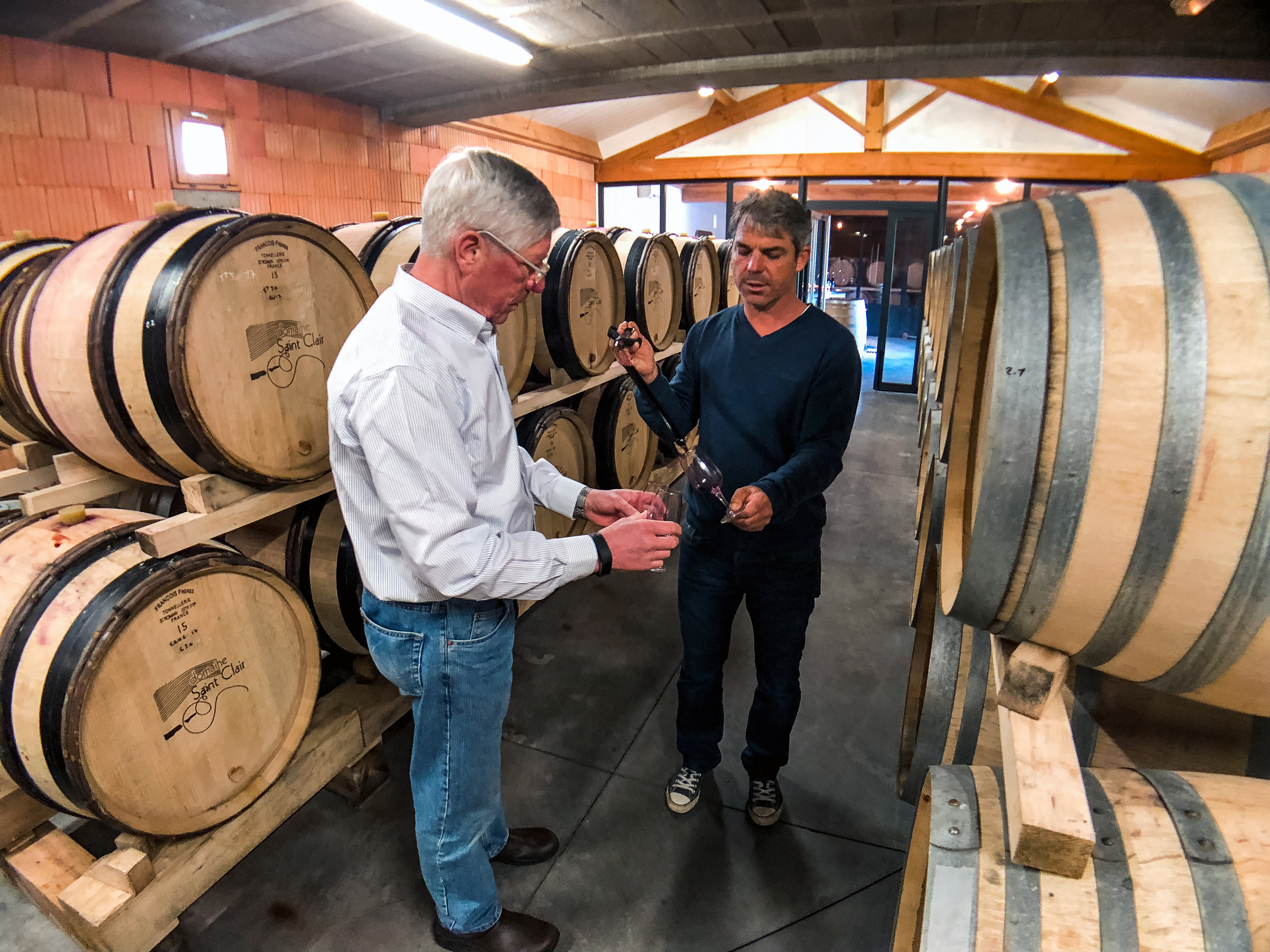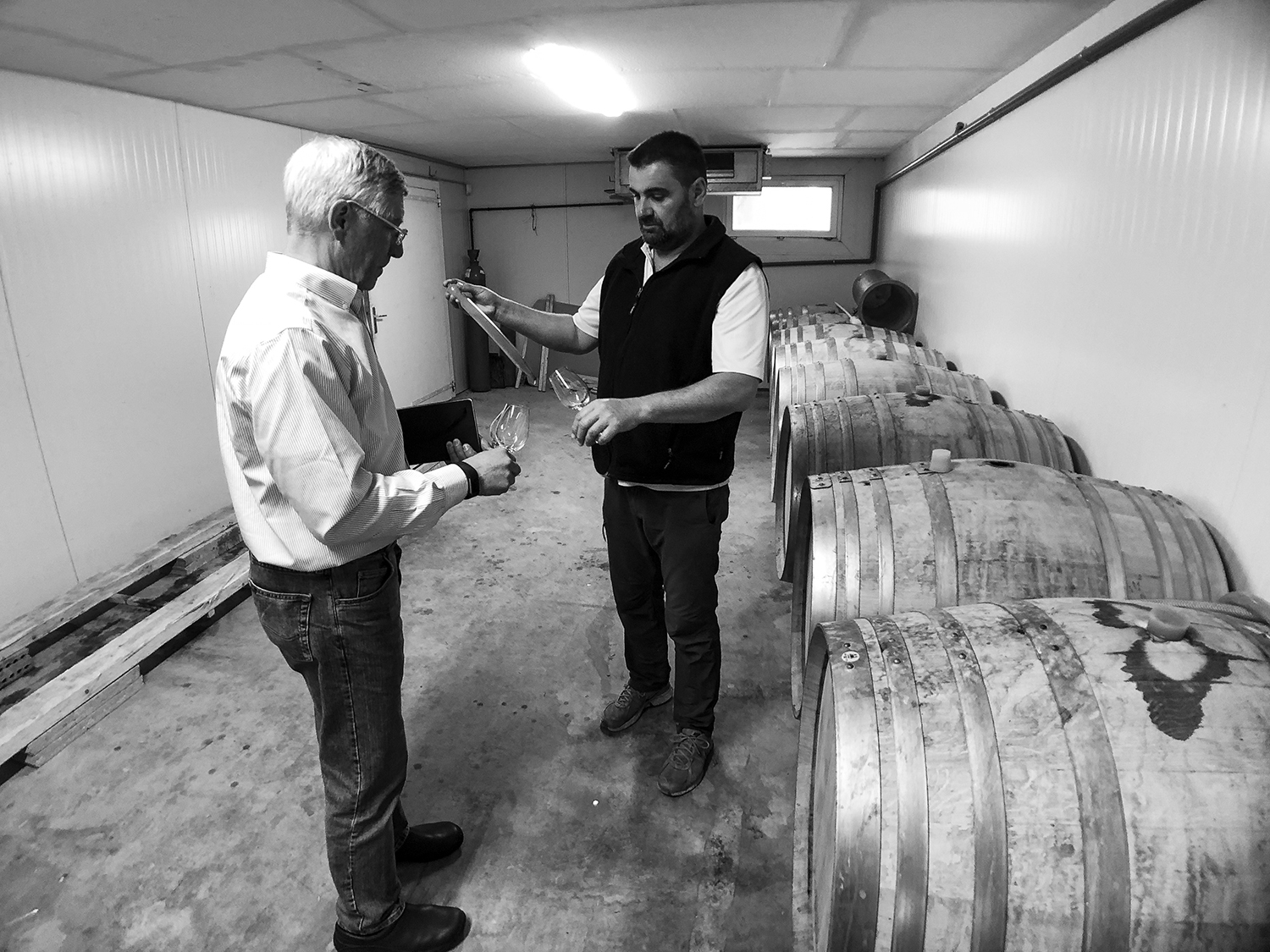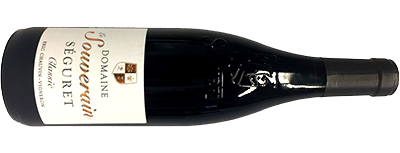If you want to buy Grand Cru white Burgundy from the Côte d’Or there are just two places to go. The first is Montrachet and its satellites, which straddle the border between Puligny-Montrachet and Chassagne-Montrachet; the second is the Hill of Corton. Most wine lovers are well familiar with the first group, but fewer know Corton-Charlemagne, the “other” Grand Cru white Burgundy. The Ravaut family has vines all along the Hill of Corton and their domaine is in Ladoix, at the border between the Côte de Beaune and the Côte de Nuits. They produce Grand Cru Corton in both red and white, and their other wines can be strikingly good. But the lesser fame of this part of the Côte means good value for the price across their list.
The Ravauts’ Bourgogne blanc 2018 is versatile white Burgundy at a very good price. The 2018 growing season was very hot and the fruit ripe, so the Ravauts raised half of this wine in vats and half in barrels to preserve the freshness. It worked: the wine is plenty rich and round in the mouth, but there’s enough freshness to keep the wine in balance. The wine goes well with a lot of meals, and your stocks are likely to diminish quickly. It’s an excellent option for your “house white” — mouthfilling, lively, and affordable.
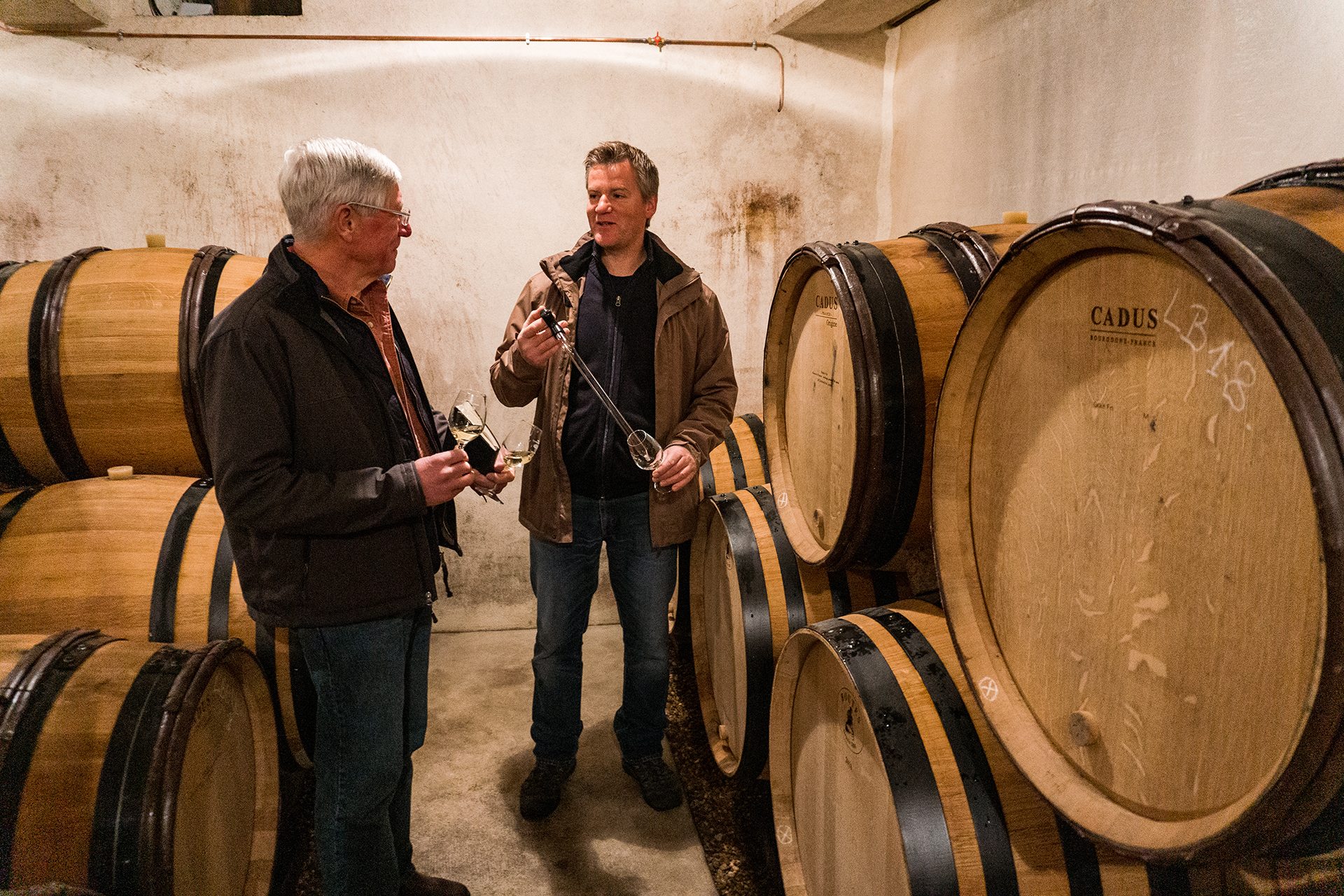
Ladoix blanc is an insider’s wine. There’s not much uncharted territory in Burgundy these days, but even aficionados can miss the town of Ladoix. And yet many experts consider the village’s best whites to be “baby Corton-Charlemagnes.” Ravaut’s Ladoix “Hautes Murottes” blanc is not a Grand Cru, of course, but the flavor and aromatic characteristics strongly resemble Corton-Charlemagne. This wine comes from 25 year-old vines in a part of the vineyard with lots of limestone, which gives the wine good tension and aging potential. With the 2018 growing season adding ripeness, this would be a good year to try it out if you don’t know it already.
Of course, there is a small quantity of Corton-Charlemagne itself — the Ravauts’ entire production is only 900 bottles, and we’re allocated far less. We thought the fruit in the 2018 was gorgeous, and there are plenty of stony notes to mingle with it. This wine has a complexity and intensity that is truly impressive, and while the price isn’t small when compared to lower-ranked white Burgundies, in comparison to Grand Cru from around Montrachet, it’s a veritable bargain. Look for notes of gardenia, chalk, pineapple, and dried melon.

The Ravauts’ reds are particularly attractive this year. As usual, the Côte de Nuits-Villages provides excellent value. The 2017 offers sweet cherry fruit mingled with ripe strawberries. The tannins are smooth and round, supporting a juicy freshness. This is a wine that should match up with a wide range of foods from the time it arrives. Jancis Robinson found “enjoyable redcurrant juiciness,” and “fine, balanced tannins.” At under $25/bot, this is an excellent everyday red Burgundy.
Aloxe-Corton is the best-known town along the Hill of Corton, and its long-lived reds are rightly renowned. The soils there are full of iron, and they produce dense, dark wines that both need and pay keeping. Ravaut’s 2017 Aloxe Corton is full of dense, dark fruit and dense, fine grained tannins. There’s a touch of licorice and some stoniness. This is a wine to put at the back of the cellar for a few years to let it soften and round out; but we’re confident that when you open a bottle a few years down the road, you will be glad you have it.

Our choice among the Domaine’s Ladoix premier cru reds in this vintage is the “Bois Roussot.” We tasted it just before bottling, and it showed a lovely, expressive nose of ripe strawberries and a seductively smooth mouthfeel — it was perhaps the wine of the tasting back in April. Jancis Robinson’s reviewer was much impressed by its “sweet red fruit with lots of ripeness and then a leathery, tarry note to finish.” We didn’t notice anything tarry, but we do think this will be an easy drinking wine, including in the nearer term — Vincent called it “éclatante,” meaning “brilliant” or “radiant.” In fact, it will likely be approachable enough when it gets here to make a glass enjoyable all by itself.
The Hill of Corton is just as famous for its Grand Cru red as for its white, and most critics would put Corton-Bressandes at the top of the list of Corton Grand Cru vineyards. Certainly it is a terrific wine at the Domaine Ravaut, and we have been adding it to our cellar for years now. The 2017 vintage is a silky wine, almost sweet in its intensity. Writing for Jancis Robinson, Master of Wine Richard Hemming found it “fleshy, ripe, sweetly spiced and wonderfully fruit-forward too. Expressive violet aromas on the nose with crunchy acid and a succulent, silky tannic texture.” In short, every inch a Grand Cru. Hemming predicted a drinking window stretching to 2037, and we’ll be putting some aside for the youngest Wilcox’s future birthdays.
RAVAUT
(case prices)
Bourgogne blanc 2018: $250
Ladoix blanc 2018: $595
Corton-Charlemagne Grand Cru 2018: $995
Côte de Nuits-Villages 2017: $295
Ladoix 1er cru “Bois Roussot” 2017: $395
Aloxe-Corton 2017: $425
Corton-Bressandes Grand Cru 2017: $795
